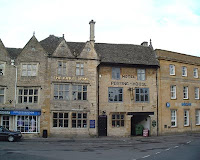Historical Recipe of the Week!

Robert May, born in 1590, published his one and only cook book at the age of 70. It covered all the decades of his life, drawing on the changing styles of cookery in the 17th century and encompassing new culinary fashions, including those of the Restoration Court and at the tables of the rich.
Many dishes were cooked in pastry cases to protect the contents from the heat of the hearth or oven. These cases were not for eating. But as kitchens improved and cooks became more inventive the pastry cases were adapted to become not merely decorative but also to be edible.
Sweet dishes were also cooked in pastry to protect the delicate custard or cheese-based fillings from the fire. As a change from yet more pastry, here is a non-pastry based dessert.
Rose Cream
1 pint double cream
3 tablespoons rose water
2 tablespoons caster sugar
5 leaves of gelatine
Soak the gelatine in water for 5 minutes until it turns into a jelly. Put the jelly into a linen bag and squeeze it out. Place the rose water in a bowl set in a pan of hot water and add the gelatine, which will dissolve. Gently heat a quarter of the cream in a pan with the sugar, stirring to dissolve. When it has, add to the gelatine and rose water liquid. Stir until completely incorporated, remove from the heat and add the remaining cream. Pour into a wetted mould and chill until set.



Comments
I did try rose ice cream a couple of weeks back (more like a sorbet than an ice cream, and possibly too much rosewater as it was very, VERY scented).
I bet this would be nice with orange flower water, too.